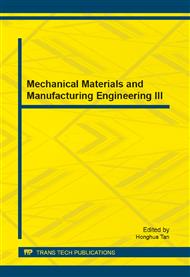p.71
p.77
p.83
p.88
p.94
p.99
p.106
p.112
p.119
Simulation Analysis of Fixed Bed Reactor for Au-Cu Non-Mercury Catalytic Acetylene Hydrochlorination
Abstract:
A two-dimensional pseudo-homogenous mathematical model was established according to the Au-Cu non-mercury catalytic reaction kinetics. The Crank-Nicholson method was used to solve the equations on the basis of experimental data. The results showed that a violent reaction at the entrance of the fixed bed reactor led to a hot spot in the acetylene hydrochlorination reaction over the Au-Cu Non-mercury catalyst. The conversion increased rapidly initially, and then flattened gradually in the axial direction. The result of simulation provided valuable data to optimize the design of reactor and the industrial operation conditions.
Info:
Periodical:
Pages:
94-98
Citation:
Online since:
November 2013
Authors:
Price:
Сopyright:
© 2014 Trans Tech Publications Ltd. All Rights Reserved
Share:
Citation:


